On the caricatures
Educated secular Westerners reared on modernism, with its inclination toward abstraction, its gamesmanship and its knee-jerk baiting of traditional authority, can miss the real force behind certain visual images, particularly religious ones. Trained to see pictures formally, as designs or concepts, we can often overlook the way images may not just symbolize but actually “partake of what they represent,” as the art historian David Freedberg has put it.
That’s certainly how many aggrieved Muslims perceived the cartoons. Circulating the pictures, they prompted Arab governments like those of Saudi Arabia and Syria, not otherwise champions of religious freedom, to support boycotts of Danish goods and to withdraw their ambassadors from Copenhagen. That in turn led European papers to republish the cartoons in solidarity with Jyllands-Posten and in defense of free speech.
Essentially this is all about how the Arab leaders can reduce their subjects’ lives to religion – in an attempt to save their own regimes. But this is to treat the people as if they had no identity beyond religion, as if the rich traditions of Arab culture counted for nothing. That is why despite all its religious zeal, the current campaign seems so banal and profane.
It certainly is intriguing that the Saudi papers pushed the problem hysterically exactly when — as happens nearly annually — the usual tragedies of people dying en masse at the moment of the pilmigrage risked causing trouble or at least bad p.r. among the Muslim masses for the government. For a hilariously sarcastic but sharply informative view on this, read the 1 February entry on the Religious Policeman blog. The anonymous (of necessity) Saudi man who created this blog has dedicated it to the
“Memory of the lives of 15 Makkah Schoolgirls, lost when their school burnt down on Monday, 11th March, 2002. The Religious Police would not allow them to leave the building, nor allow the Firemen to enter,”
because their dress code was not up to Wahabite rules. Unhappily little of this (political) analysis can be found in the Western papers, most of which piously bemoan the mocking of religions and other peoples’ believes, or gesture toward the sacro-saint democratic principle of freedom of the press. The latter is of course what the more reactionary newspapers do — which also happen to be those that most gleefully reproduced the cartoons , supposedly in order to show their support for a “free press.” One wonders. As Daniel Cohn-Bendit says in an interview today, concerning one of those right-wing papers, Die Zeit:
If it had been caricatures insulting the Christian or Jewish faiths, the paper would never have printed them. A newspaper like Charlie Hebdo, which, in the context of an Anti-Aids-Campaign lets Christ on the cross with a hardon and a condom say ‘I never fuck without a condom,’ would have the right to print Mohammed caricatures. There’s a strong stink of hypocrisy coming from all those papers’ appeals to ‘freedom of opinion.’
It would be interesting to see what would happen in this country if a mainstream newspaper reprinted the Charlie Hebdo cartoon.
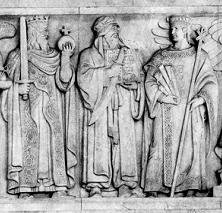

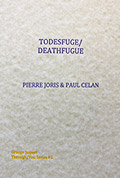 “Todesguge/Deathfugue”
“Todesguge/Deathfugue”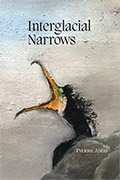 “Interglacial Narrows (Poems 1915-2021)”
“Interglacial Narrows (Poems 1915-2021)”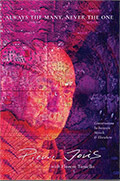 “Always the Many, Never the One: Conversations In-between, with Florent Toniello”
“Always the Many, Never the One: Conversations In-between, with Florent Toniello” “Conversations in the Pyrenees”
“Conversations in the Pyrenees”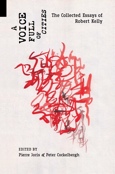 “A Voice Full of Cities: The Collected Essays of Robert Kelly.” Edited by Pierre Joris & Peter Cockelbergh
“A Voice Full of Cities: The Collected Essays of Robert Kelly.” Edited by Pierre Joris & Peter Cockelbergh “An American Suite” (Poems) —Inpatient Press
“An American Suite” (Poems) —Inpatient Press “Arabia (not so) Deserta” : Essays on Maghrebi & Mashreqi Writing & Culture
“Arabia (not so) Deserta” : Essays on Maghrebi & Mashreqi Writing & Culture “Barzakh” (Poems 2000-2012)
“Barzakh” (Poems 2000-2012) “Fox-trails, -tales & -trots”
“Fox-trails, -tales & -trots”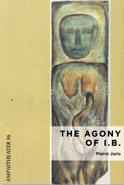 “The Agony of I.B.” — A play. Editions PHI & TNL 2016
“The Agony of I.B.” — A play. Editions PHI & TNL 2016 “The Book of U / Le livre des cormorans”
“The Book of U / Le livre des cormorans” “Memory Rose Into Threshold Speech: The Collected Earlier Poetry of Paul Celan”
“Memory Rose Into Threshold Speech: The Collected Earlier Poetry of Paul Celan” “Paul Celan, Microliths They Are, Little Stones”
“Paul Celan, Microliths They Are, Little Stones”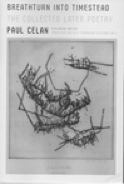 “Paul Celan: Breathturn into Timestead-The Collected Later Poetry.” Translated & with commentary by Pierre Joris. Farrar, Straus & Giroux
“Paul Celan: Breathturn into Timestead-The Collected Later Poetry.” Translated & with commentary by Pierre Joris. Farrar, Straus & Giroux
The one that shows Mohammed holding his face, saying “I am followed by morons”? I would be interested in seeing it too. Perhaps Charlie Hebdo has it on their website, the way Le Monde posts their cartoons on theirs.